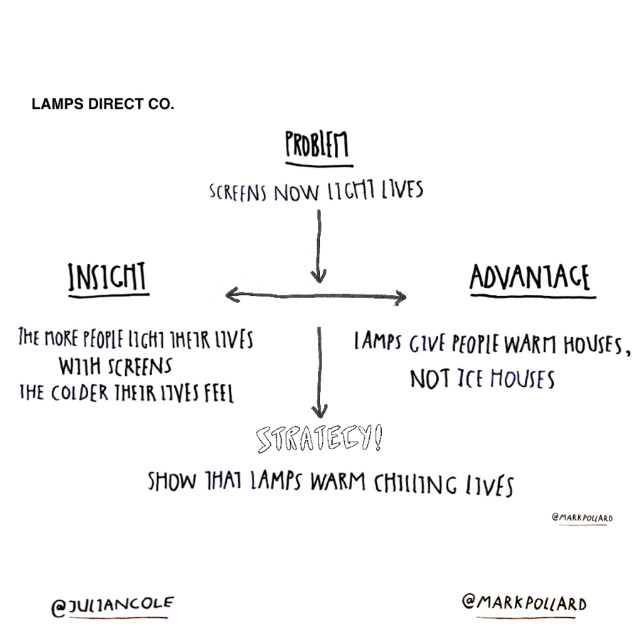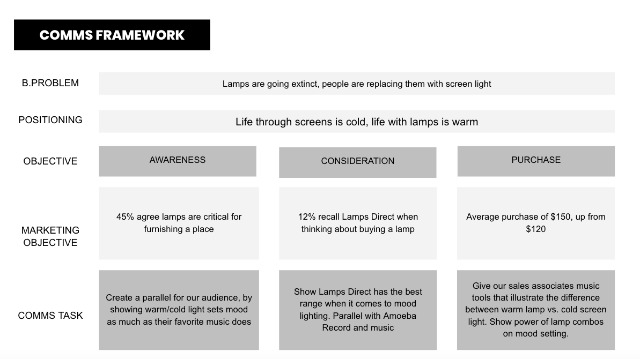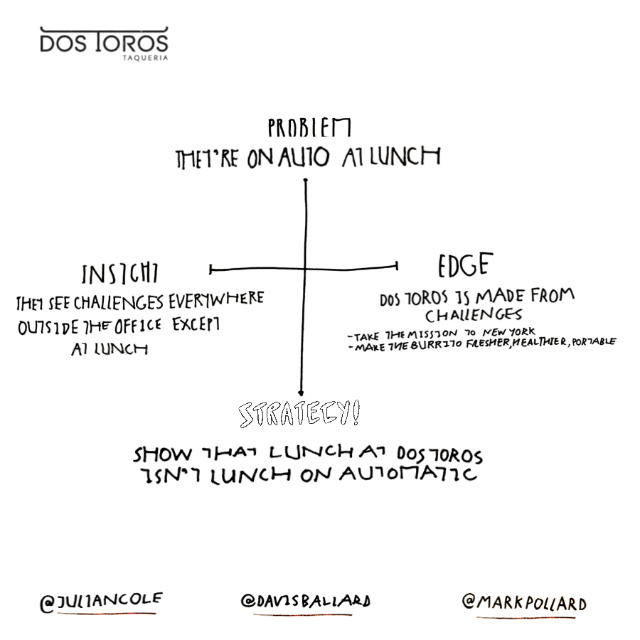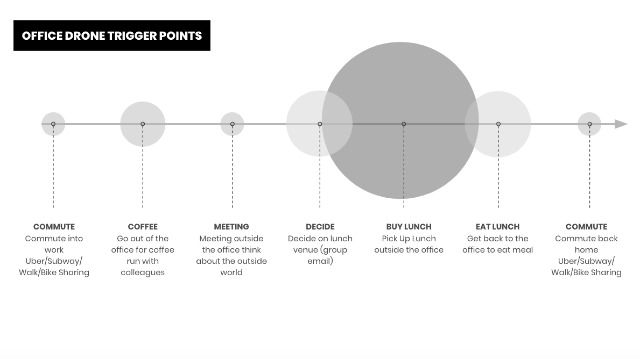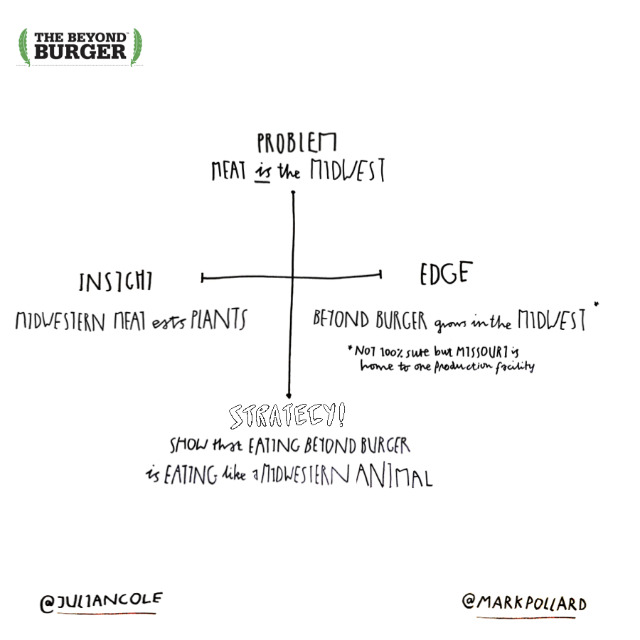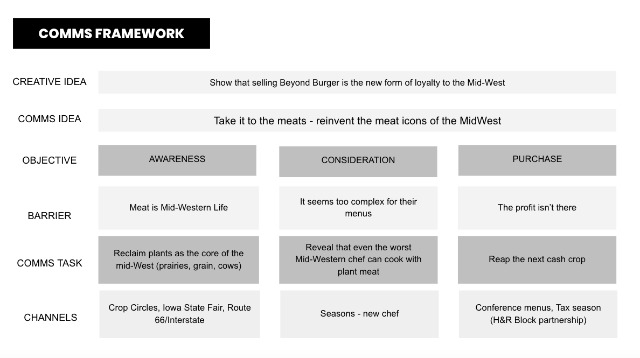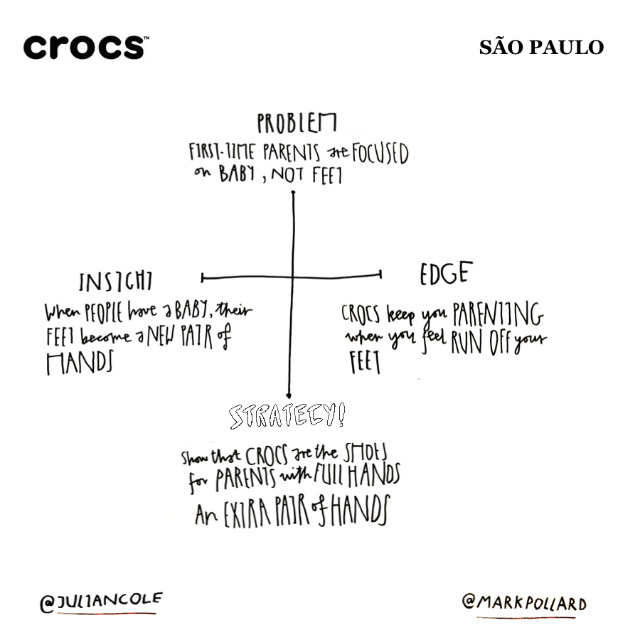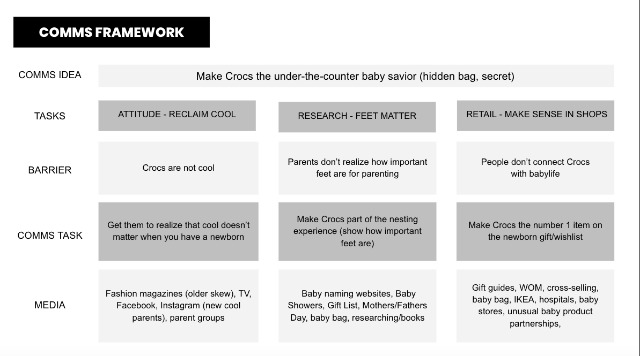Doing strategy under time pressure isn’t easy. But doing strategy under time pressure in front of people is, done right, a great way to practice.
Julian Cole and I did our first Live Action Strategy as an impromptu section of a Sweathead podcast we recorded together. We’ve known each other since 2008-ish and have done what little we can to share the tools and techniques we use, to learn in public, and to share work as we’re doing it ever since.
In the first Live Action Strategy, we fell upon lamps. What if lamps were going extinct because humanity preferred the light from their devices? If you’re going to play with something so many people take for granted, you might as well put it into extreme circumstances, right?
You can hear Julian and I go back and forth on the strategy here. You’ll hear gentle arm wrestles about what particular words mean and who gets to lead the doing of the word (eg “idea” or “strategy”) but why this works is because:
- Our goal was to make it work,
- It wasn’t about who looked good or best - it was about getting where we needed to go,
- We used time as a constraint,
- We asked each other how we meant a word and what we were trying to think through as we were working,
- We knew that, in reality, we’d try to come up with 3-5 more of these so the point was to come up with something and not fuss over it.
Whether or not you respect where we landed isn’t the point. The point is the power of practice and of finding ways to work with people in difficult situations and to have go-to techniques you can use to help you get through projects under intense scrutiny and in the midst of difficult politics.
Before you delve into the 4 examples below, you might like to read about how I approach account planning and strategy (there are more details in my book “Strategy Is Your Words”).
1. Lamps
What if lamps were going extinct?
The language is a little flowery here but it hangs together. Its argument is that people are feeling disconnected and their devices are encouraging this disconnection, however, lamps can bring people together and create warmth in lives and relationships.
You can read the entire presentation here.
2. Dos Toros
How do you get busy New Yorkers to change their lunch routines?
This strategy is pretty straight-forward: challenge people who’ve come to New York for adventure to remember that lunch is also a time for adventure.
If we were to devise several more directions, we’d look for strategies that were A. More provocative B. More specific to Dos Toros. But this can still work.
You can read the entire presentation here.
3. Beyond Burger
How do you sell vegetarian burgers to mid-western Americans?
I like where this strategy is trying to go. It’s pointing out the irony that people who like eating meat actually eat animals that eat plants. I don’t think it’s too tricky or convoluted.
The communications framework tries to address the imagined barriers a restauranteur might have: 1. Meat–not plants–is for the mid-west 2. Plant-based burgers will complicate their menus 3. Plants won’t make profits.
And we’re suggesting the creative work act like a traditional meat icon of the mid-west by appearing where and how meat typically does.
You can read the entire presentation here.
4. Crocs
In São Paulo, Brazil, our crew at The Strategy Super Sizer Megaclass wanted to focus on making Crocs something new parents would buy.
The strategy turns on an insight from Mariana Lobo - when people have babies, their feet turn into a second pair of hands. This is true and it’s simple. When you have a baby or two in your arms, and you’re trying to open or close or reach for things, suddenly… “Oh, my feet can do that, too.”
The communications framework then sets up creative work to address imagined barriers 1. Not cool 2. Don’t use my feet 3. Crocs aren’t for parenting
You can read the entire presentation here.
Practice!
The guts of the thinking above happened within 30 minutes each and often in front of people. You can beat this thinking - we know. But that won’t stop us from sharing it. So, create a brief for yourself and practice.
You can see Elan Miller’s strategy for The Oura Ring here. Meanwhile, Marco G. Del Valle wasn’t satisfied practicing once. He created a month of strategy and shared it all on Twitter. It’s an incredible and heart-warming endeavor.
You can tag @markpollard and @juliancole if you decide to share your thinking. We’re here for you.

